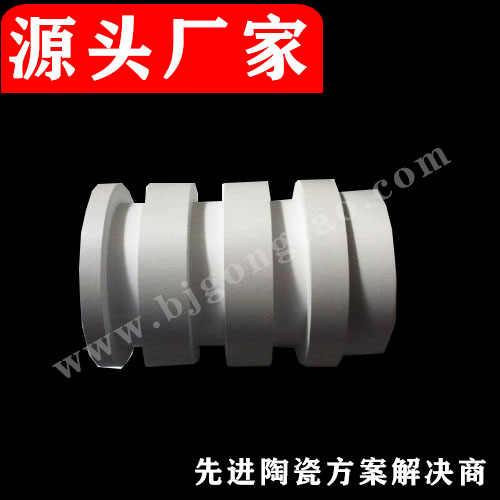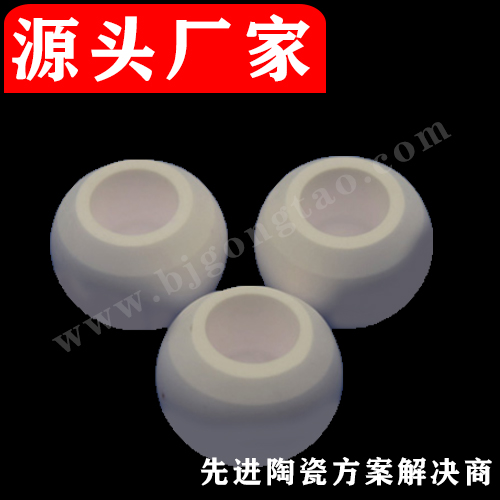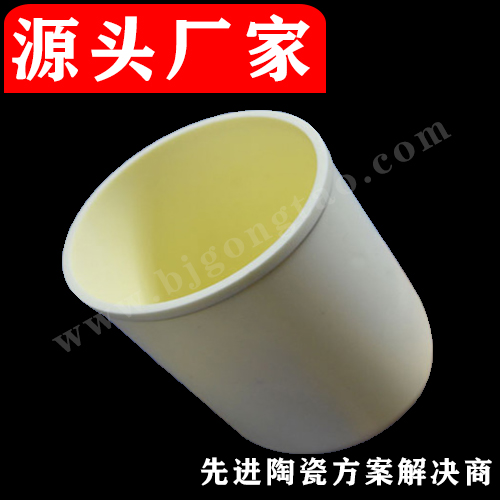
Suzhou Kaifa New Material Technology Co., Ltd.
Email:heqing@szkfxc.com
Email:sales@szbknm.com
Email:bkxc.bonnie@gmail.com
Future-proof ultra-high-temperature ceramic materials
1 Background
Recently, with the completion of the hoisting of the last reflecting surface, the main project of the world‘s largest single-aperture radio telescope, 500m-diameter spherical radio telescope (FAST), in Dawohan, Pingtang County, Qiannan Prefecture, Guizhou Province, has been successfully completed, which means that China will go further on its journey to space. Although it has the conditions of the sky and eyes and can discover deep space matter and galaxies, in the future, our spacecraft can enter space and bring back real samples for analysis and testing, which will help us to analyze the history of the birth of the universe visually. As the science fiction writer Mr. Liu Cixin said, the most important thing for human spacecraft to fly in space is to overcome the "gravity deep well". Jumping out of a deep well often requires a huge price. Only after the aircraft has obtained sufficient speed can it escape the earth‘s gravity well.

There is a natural way to go wherever you go. The spacecraft needs to pass through the dense atmosphere during the process of returning to Earth. This process is similar to the high-altitude diving process of divers. Athletes entering the water at 10m jumping platform are basically about 14m / s, and the reentry vehicle enters the atmosphere at a particularly fast speed. For example, when the space shuttle reenters the atmosphere at an altitude of 100km, the flight speed reaches 7800m / s. The difference between the two can be seen. Although the density of air is much smaller than that of water, the heat and force generated by friction on the surface of the aircraft during the flight has an exponential relationship with the speed of flight, and the effect of speed is particularly significant.

Therefore, for a spacecraft flying at a high Mach number, how to overcome the heat in flight is very important. At present, the heat protection technology of the aircraft mainly uses the mass loss and chemical changes of the ablated materials to remove the heat. For the spacecraft head and wing leading edge and other parts, the temperature is often above 2000 ℃, and special materials are needed to meet the requirements of heat protection and load bearing. This type of local structure usually uses carbon / carbon composite materials, but carbon / carbon materials tend to ablate more severely under aerobic conditions, and their oxidation resistance is weak. At present, domestic and foreign countries have also prepared some antioxidant carbon by various means. / Carbon composite material. At the same time, another material system capable of adapting to the above extreme conditions has gradually attracted widespread attention. It is an ultra-high temperature ceramic material.
2 What is ultra high temperature ceramic material
Ultrahigh-Temperature Ceramics (UHTCs) was first developed by the United States Air Force. It mainly refers to a special material that can maintain chemical stability in high temperature environment (above 2000 ℃) and reaction atmosphere (such as atomic oxygen environment). Some high-melting transition metal compounds, including borides, carbides, and oxides, and multi-component composite ceramic materials composed of the above compounds are collectively referred to as ultra-high-temperature ceramic materials. Among these high melting point transition metal compounds, the melting points of TaC, ZrB2, HfB2, HfC, etc. exceed 3000 ° C, so that they have great application potential under extreme high temperature conditions.
Ultra-high temperature ceramic materials such as ZrB2 and HfB2 were initially studied as nuclear reactor materials. In the 1960s, related work by ManLabs in the United States showed that such materials have great application potential in the nose cone and the leading edge of the wing. In the 1990s, the United States implemented the SHARP program and adopted the militia III to carry out assessments of three ultra-high-temperature ceramic materials, HfB2 / SiC, ZrB2 / SiC, and ZrB2 / SiC / C. After the material was recovered, cracks were found. After analysis, it was considered that the particle agglomeration defects in the material were an important phenomenon leading to the occurrence of cracks. This flight test also once again proved that ultra-high temperature ceramic materials have great potential in extreme high temperature environments.

3 Research Hotspots
At present, more work of ultra-high temperature ceramic materials is still in the basic research and mechanism exploration stage. The research content mainly focuses on the following four aspects: 1) research on the preparation technology of materials; 2) mechanical properties of materials; 3) thermal shock resistance of materials 4) Material resistance to oxidation / ablation and thermal response. In the development of ultra-high temperature ceramic materials, scholars first paid great attention to ZrB2 and HfB2-based ceramic composites. Most of the research work was also based on the above materials. Of course, some scholars also carried out materials such as TaC and HfC. Related research.
3.1 Material Preparation Technology
At present, the main preparation processes of ultra-high temperature ceramic materials include hot-pressing sintering, discharge plasma sintering, pressureless sintering and other sintering methods. Among them, hot-pressing (Hot-Pressing) is the most widely used sintering method, that is, to apply a certain pressure to the material while sintering it at high temperature to achieve densification of the material. Hot press sintering includes two methods: high temperature and low pressure sintering (above 1900 ℃, pressure 20-30MPa) and low temperature and high pressure sintering (temperature <1800 ℃, pressure> 800MPa). Spark plasma sintering (Spark Plasma Sintering) is essentially a kind of hot-press sintering. Although the process is reported frequently, the process is still in the mechanism research stage. At the same time, its expensive equipment and high sintering costs also limit its popularity.
With the advancement of technology and researchers‘ deep understanding of the sintering mechanism of ceramic materials, a new generation of pressureless sintering technology has been born. This technology was originally based on dry pressing or cold isostatic pressing, and required sintering aids to enhance the sintering effect. Later, in order to achieve net size molding, colloidal molding was developed. Yang Rujie, Qu Qiang, Du Shuang, etc. made a detailed summary and analysis of the above materials preparation technology and its characteristics.
3.2 Mechanical properties of materials
The mechanical properties of ultra-high temperature ceramic materials mainly include bending strength and fracture toughness. In terms of microstructure, the mechanical properties of materials have a greater relationship with their internal structural components. The influencing factors of macromechanical properties are mainly reflected in the material density, grain size, content and type of the second phase or sintering aid. A large number of scholars at home and abroad have done a lot of work in this field, including Chamberlain, Rezaie, Watts, etc. Guo Qiangqiang, aerospace institute 703, has summarized this in detail.
3.3 Thermal shock resistance of materials
During the flight, the leading edge of the spacecraft may suddenly rise in temperature, resulting in a large thermal stress at that location. Once the material has cracks under thermal stress conditions, or there are small cracks in the initial state, the cracks easily spread under the condition of thermal shock, which is characterized by the brittleness of ceramic materials. Therefore, the thermal shock resistance of such materials needs to be fully studied and analyzed before engineering applications. At present, the thermal shock resistance of ceramic materials is mainly carried out by the water quenching method, and the thermal shock resistance of the materials is characterized according to the critical thermal shock temperature difference.
3.4 Anti-oxidation / ablation properties of materials
The single-phase ZrB2 (or HfB2) has good anti-oxidation performance below 1200 ℃, and the material exerts its anti-oxidation effect by forming a liquid glass phase of B2O3 in the process of gradually increasing temperature. After the material is above 1200 ° C, B2O3 loses its antioxidant effect due to rapid evaporation, resulting in the rapid oxidation of ZrB2 (or HfB2). For this reason, some scholars try to add a second phase (such as SiC, etc.) to improve the oxidation resistance of the material. The addition of the second phase containing Si can cause the material to generate a SiO2 liquid glass phase covering the surface of the material at a high temperature above 1200 ℃ To improve the oxidation resistance of the material.
The US Air Force has conducted a lot of research on the oxidation resistance of ZrB2 and HfB2 compounds, and the results show that the second phase SiC with a volume content of 20% is the best for hypersonic aircraft. At the same time, the addition of C can improve the ability of the material to resist thermal stress, but with the increase of C content, the oxidation resistance of the material is gradually decreasing. Other researchers have also done a lot of research on the addition of other composite phases. The introduced composite phase compounds include Ta, Nb, W, Mo, Zr and their oxides. NASA‘s Ames Research Center (Ames Research Center) has done a lot of important work in this field, with a solid foundation.
4 Research units
At present, many institutions at home and abroad have conducted a lot of research on ultra-high temperature ceramic materials. According to public literature, the units engaged in related research work are as follows:
ZrB2-based ceramics: NASA Ames and Glenn Research Center, U.S. Air Force Research Laboratory, Illinois Champagne, Harbin Institute of Technology, U.S. Surface Warfare Center, Japan National Institute of Materials, Imperial University London, Korea Institute of Materials, Italy Ceramic Technology Research Institute, Missouri University of Science and Technology;
HfB2-based ceramics: American Ames Research Center, Italian Ceramic Technology Institute;
Fiber-reinforced ultra-high-temperature ceramics: Shenyang Branch of the Chinese Academy of Sciences and the US Air Force Research Laboratory.
references
[1] Hu Jidong et al. Overview of the development of spacecraft thermal protection materials [J]. Space Return and Remote Sensing. 2011.
[2] Yang Yazheng. Research progress on thermal protection materials and structures of hypersonic vehicles [J]. Applied Mathematics and Mechanics. 2008, 29 (1).
[3] Yang Rujie. Research on Injection Molding and Densification of Zirconium Boride-Silicon Carbide Ceramic Materials [D]. Doctoral Dissertation of Harbin Institute of Technology. 2013.
[4] Qu Qiang et al. Thermal shock resistance of ZrB2-based ultra-high temperature ceramic materials [J] .Aerospace Materials & Technology.2010 (2).
【5】 Guo Qiangqiang et al. Research progress of ultra-high temperature ceramics [J]. Aerospace Materials Technology. 2015 (5).
[6] Han Jiecai et al. Characterization and evaluation of the performance of two typical heat-resistant materials for hypersonic vehicles [J]. Progress in Mechanics, 2009, 39 (6).
[7] E. Wuchina. UHTCs: ultra-high temperature ceramic materials for extreme environment applications [J]. The electrochemical society. 2007.
【8】 F. Monteverde .Processing and properties of ultra-high temperature ceramics for space applications. Materials Science and Engineering A 485 (2008) 415-421.
[9] Johnson. Ultra high temperature ceramics (UHTCs) NASA. 2016.
[10] Johnson. Thermal Protection Materials. NASA. 2011.
[11] A. Paul. UHTC–carbon fi bre composites: Preparation, oxyacetylene torch testing and characterization [J]. Journal of the European Ceramic Society 33 (2013) 423–432.





